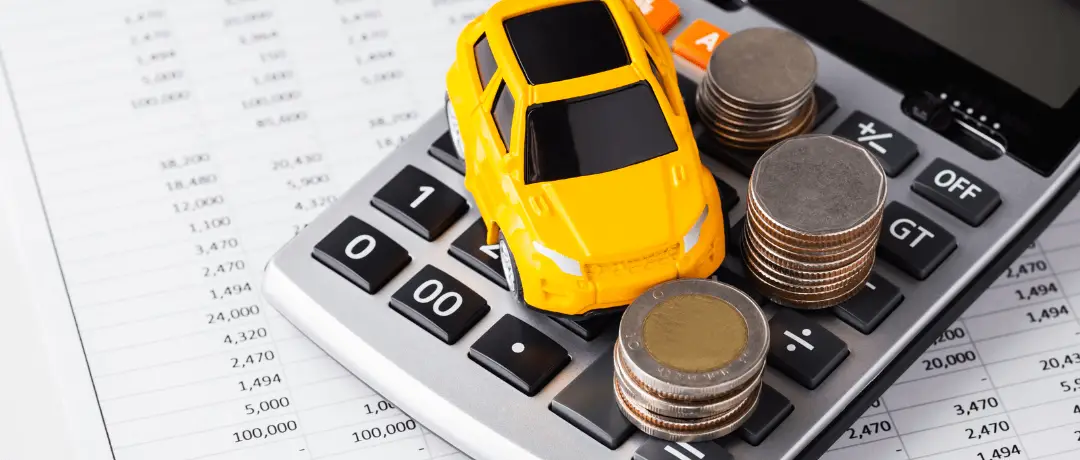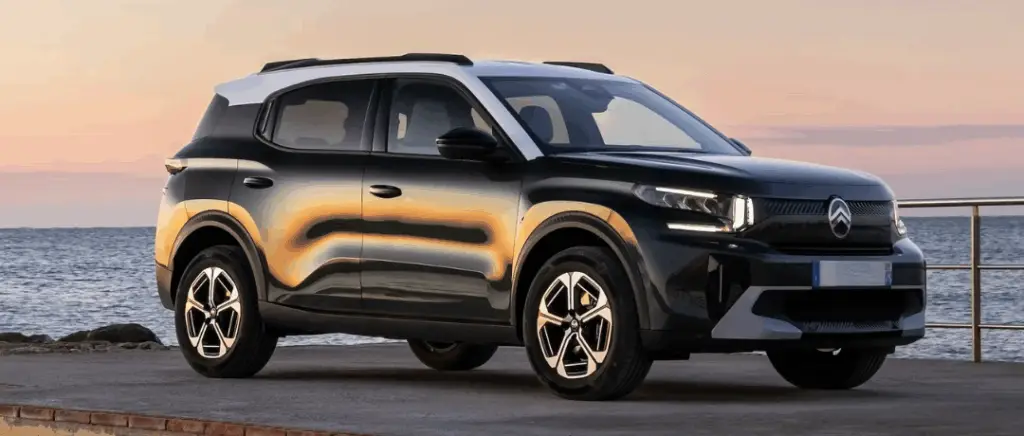Monday to Friday
9am - 12.30pm - 2pm - 7pm
Electric vehicle leasing: what is it?
Before getting to the heart of the matter, what is an electric vehicle lease?
As a reminder, the LLD (long-term leasing) is a method of financing that has become commonplace among professionals. Over a set period - generally between 12 and 60 months - the lessee pays the lessor a monthly rental and the lessor entrusts the lessee with one or more vehicles.
So what is the difference between long-term leasing, leasing and LMD?
Be careful not to confuse these 3 other financing methods:
- Leasing is based on a long-term contract. At the end of the contract, the vehicle is returned to the lessor and the lessee has the option of renewing the contract with another vehicle if they so wish.
- La LOA (Location avec Option d'Achat) is another form of leasing where the lessee hires the vehicle for a given period and then at the end of the contract becomes the owner of the electric vehicle.
- La LMD (Medium-term leasing)This is a leasing arrangement for a period of 1 to 24 months, enabling the lessee to hire an electric vehicle for a short period. At the end of the contract, you have to opt for a full lease. This could be interesting if you want to test an electric vehicle before deciding to buy.
Here is a comparative table to help you understand the difference between these three financing methods:
| LMD | LLD | LOA | |
|---|---|---|---|
|
Rental period
|
Short period between 1 and 24 months
|
Long period between 12 and 60 months
|
Long period between 48 and 27 months
|
|
Contribution
|
No
|
No
|
Yes
|
|
Is it possible to buy back the vehicle at the end of the contract?
|
No
|
No
|
Yes
|
|
Insurance cover?
|
Yes
|
At the tenant's expense
|
At the tenant's expense
|
|
Maintenance paid for?
|
Yes
|
Yes
|
Payable by the lotaire
|
|
Is assistance covered?
|
Yes
|
Yes
|
At the tenant's expense
|
|
Kilometric ceiling
|
Yes
|
Yes
|
Yes
|
To find out more, click here: what leasing offer is right for a start-up company?
Why lease an electric vehicle?
At a time when the European Union has definitively banned the production and sale of new combustion-powered cars and vans by 2035, the French government is calling for all businesses to switch to electric mobility, via the Electric Mobility Act. LOM.
Of course, the purchase of an electric vehicle represents a fairly substantial investment, but there are alternatives, including leasing.
Here are some of the advantages of opting for a long-term lease:
Electric car leasing: benefit in kind
When you opt for a full service lease, your cash flow is protected by company benefits in kind.
As a reminder, as the use of electric vehicles contributes to the energy transition, the legislation has introduced an additional allowance from 1 January 2020. This is intended to provide further encouragement to companies wishing to offer electric vehicles. company cars to its employees. An asset accessible thanks to benefits in kind.
Although this was due to end on 31 December 2022the end date for the benefit in kind for electric vehicles has been postponed to 31 December 2024. With this extension, conditions have been added:
If the terminal is installed in the workplace :
- The terminal is used by the employee for non-business purposes and the benefit in kind will be €0,
If the terminal is installed outside the workplace :
- The employer more or less covers the cost of purchasing and installing the terminals. In this case, there are two further conditions:
- If the employee's employment contract is terminatedthe recharging point will no longer be accessible to the beneficiary. In this case, the charge is excluded from the basis of assessment for social security contributions,
- If the terminal is installed on the employee's premises and is not removed at the end of the employment contractThe cost of the service is also excluded from the basis of assessment for social security contributions, to the extent that it is not covered by the social security contributions. up to 50 % of actual expenditure, i.e. a maximum of €1,000,
- The employer covers the other costs of using or renting the car to a greater or lesser extent. terminal installed outside the workplace. In this case, the cost will not be taken into account when calculating social security contributions. In addition, it will be in the limit of 50 % of the amount of actual expenditure which should have been borne by the employee.
For further information: provision of an electric vehicle charging point
In addition to offering company cars for your employeesyou can also offer top-up cards. They will be able to recharge their vehicles at more than 300,000 public charging points across Europe.
Converting your fleet to electric vehicles under full service leasing
As we mentioned earlier, the LOM law was drawn up to enable businesses to make the transition to energy efficiency. This process takes place over several periods, with a minimum proportion in accordance with article 26A of the LOM law:
- 1st January 2022: renewal of 10 % of the vehicle fleet
- 1 January 2024: renewal of 20 % vehicles in the fleet
- 1 January 2027: renewal of 40 % vehicles in the fleet
- 1 January 2030: renewal of 70 % vehicles in the fleet
When you opt for electric vehicles (cars and/or vans), you have the choice of electric vans), this gives you the chance to change vehicles regularly.
As your company is likely to evolve over time, it is important to have vehicles at your disposal:
- Functional,
- That meet the current and future needs of your company and your employees,
- Equipped with the latest technology, especially around theautonomy of the car - an important factor if you have to make long journeys.
Find out more : Company - the advantages of an electric car fleet
Preserved debt capacity
When you choose to finance your electric vehicle with a long-term leasing agreement, you avoid tying up borrowed or own capital and retain the financial capacity for other projects related to your core business. As a result, the lease payments are expensed as incurred, provided that a tax write-back corresponds to the share of non-deductible depreciation applied by the leasing company.
Unlike a loan, leasing does not affect your balance sheet. In this case, the lease payments will not be treated as an investment, but as an expense and therefore deductible.
How can you optimise cash preservation?
With these objectives in mind, a number of complementary actions can be envisaged to optimise cash flow and make even greater savings:
Optimising the TCO of your vehicle fleet
One way of preserving your company's cash flow is to optimise the TCO (Total Cost of Ownership).
Given that your business is bound to evolve, it is important to be flexible and to adjust to changes both within and outside your company:
- Regulatory and legislative frameworks,
- Technological developments,
- New business needs.
Being able to manage the TCO will enable you to take an in-depth look at a number of factors, including :
- An estimate of the actual costs of the park,
- ROI evaluation (Return on Investment),
- The right time to renew the vehicles in your fleet,
- The choice and selection of vehicles, engines and energy consumption.
Thanks to this benchmark indicator, the manager will be able to identify the expenditure items that need to be optimised and thus improve cost control.
To optimise your fleet's TCO, you can start by focusing on :
- Choice of vehicle
- Costs associated with maintaining the vehicle, such as oil changes, tyre replacements, car washes, etc.).
- Train your staff in the use of electric vehicles: your staff can also help to optimise TCO by offering them training in the use of electric vehicles. This training will enable them to adopt good practices, such as :
- Eco-driving
- The use of regenerative brake
- Checking the condition of tyres, lights and windscreen wipers
- Anticipate slow-downs to avoid excessive braking
Remember: TCO (Total Cost of Ownership) covers all the costs associated with owning a vehicle, from the moment it is purchased until it is sold or scrapped.
Monitoring energy consumption
As a first step, you can monitor the energy consumption of your electric vehicle, to avoid additional energy costs and make savings. savings in the face of rising electricity prices from 1 February 2023.
A number of practices are possible, such as :
- Choosing a fuel-efficient electric vehicle
- Drive smoothly
- Use the "eco" mode to reduce the energy consumed by the vehicle and save fuel. battery
For further information: 8 tips to reduce the energy consumption of your electric car
Electric cars: national and local aid
Did you know that there are grants available for purchasing and leasing electric vehicles?
To encourage individuals and businesses to switch to electric mobility, the government has introduced a number of incentives, including :
- For legal entities, the ecological bonus is set at 27 % of the purchase price, including tax, up to a maximum of €3,000, for the purchase of an electric passenger car,
- For the purchase of an electric van, the aid is set at 40 % of the acquisition cost and capped at €4,000 if the van is purchased or leased by a legal entity,
- For the used electric vehiclesthe grant is set at €1,000.
- Conversion premium : when a polluting vehicle (diesel or petrol) is scrapped, the government pays the motorist a premium enabling him or her to buy or lease a low-pollution vehicle. To be eligible for this bonus, your establishment must be based in France.
The amount for the company is capped at 2 500 €.
- Interest-free loan (PTZ) From 1 January 2023 and for a period of 2 years, the zero-rate loan for the purchase of a low-polluting vehicle is being launched on an experimental basis. A number of conditions must be met to qualify for this scheme, which is set at €30,000:
- Be an SME or VSE with fewer than 10 employees
- Being located in a ZFE-m (Low Emission Mobility Zone) or in a neighbouring inter-municipality
- Have sales of no more than €2 million
- Acquire an electric vehicle at a cost of 45,000 maximum for a car, 60,000 for a vanwith a total laden weight of 2.6 tonnes and CO2 emissions of less than 50 grams per kilometre.
Good to know in the case of a LLD or LOAThe PTZ (zero-rate loan) is also eligible, up to a maximum of €10,000. The loan repayment period corresponds to the rental contract.
- ADEME green loan : this scheme, proposed by BPI Francewill help small and medium-sized businesses by financing their energy and ecological transition projects. Over a period of 2 to 10 years (with a 2-year capital amortisation grace period), the organisation undertakes to pay between €10,000 and €1,000,000 to the company.
- Aid for electrical retrofitting : introduced in April 2020, it is now possible to electrify a thermal vehicleThis is done by removing the combustion engine and fuel tank from the vehicle and replacing them with a battery and an electric motor: this is known as retrofitting. The amount depends on the category of vehicle:
- For a car: a bonus of €2,500,
- For a van (depending on its weight): a bonus of up to €9,000.
For further information:
LLD: avoiding additional expenditure
As long-term leasing is a form of financing where the rent remains unchanged throughout the contract, it gives you greater control over your cash flow.
What's more, leasing an electric car saves you the extra expense of :
- The cost of reselling a vehicle by calculating its depreciation
- Reimbursement of compensation
- Advance payments for repairs
- Purchase of a new electric vehicle
- Company Vehicle Tax (TVS): electric vehicles emitting less than 60g of CO2 (WLTP standard) are not subject to this tax.
In this way, the electric vehicle hire company takes full responsibility for the above-mentioned points. This is a great relief for your cash flow.
Bonus: save on fuel
In fact, by opting for a leased electric car, fuel costs are lower than for their combustion counterparts. At present, the cost of fuel for internal combustion vehicles varies between €1.60 and €2 per litre.
On the other hand, it's true that electricity costs have recently risen, but you have the option of recharging your vehicle at off-peak times, when electricity use is less frequent.
At these times, electricity costs are lower. This practice is one of the many tricks you can use to cope with the economic crisis. rising electricity costs.
Read also: 10 myths about electric cars debunked
Conclusion
One of the reasons why long-term leasing is so popular with businesses is that it can be adapted to suit the company's situation, i.e. electric vehicles are offered according to the project, the budget and the company's needs.
One of the advantages of long-term leasing is that it allows you to preserve cash flow and better control financial management.
And if you're looking to renew your vehicle fleet, think :
- National and local aid
- Adapting and training your staff to use electric vehicles in an environmentally-friendly way
- Keep a close eye on your company's TCO so that you can make the right decisions as your business evolves and needs change.
For more information, we've put together a guide to this topic to explore the different aspects in depth:
Read our article about :

































